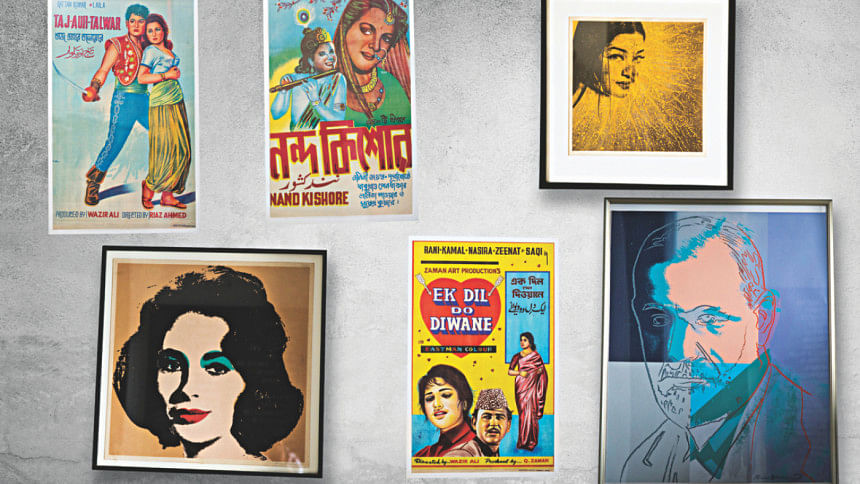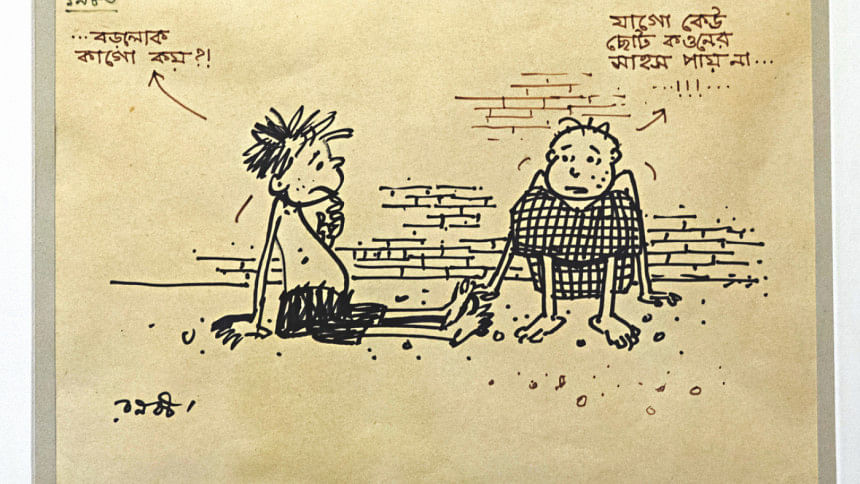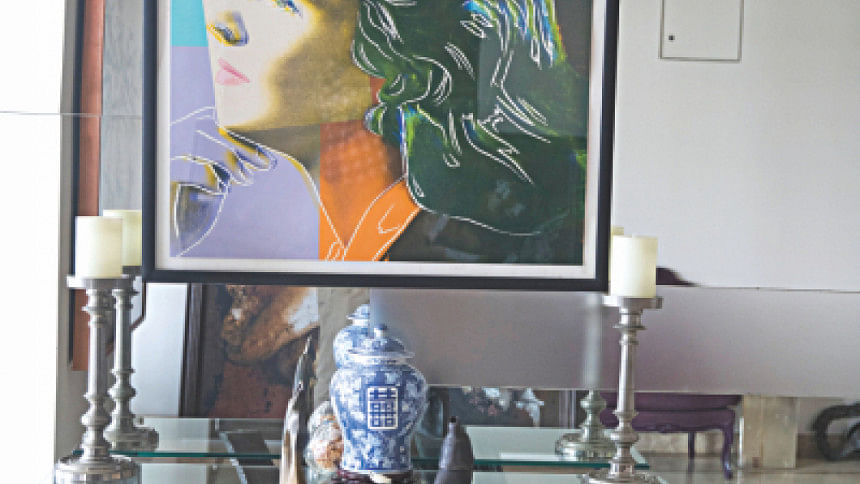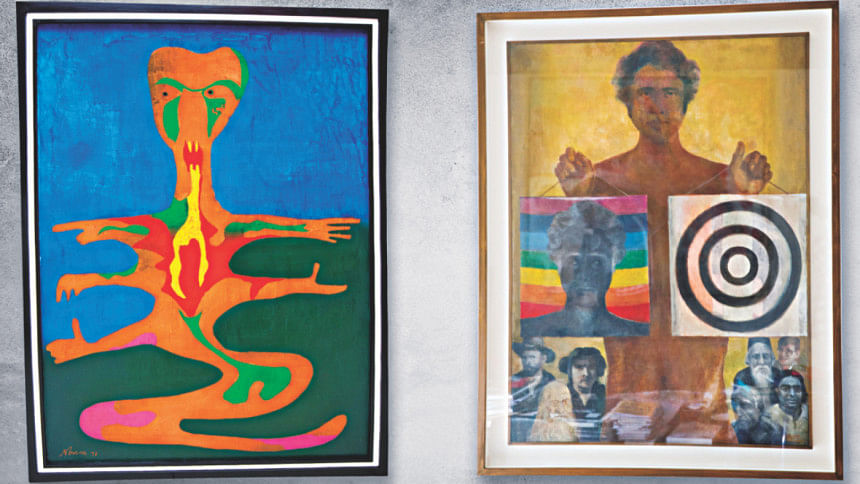A walk down 'pop' lane

How does one define culture, and essentially 'pop culture'? Never mind the academicians as there is no true consensus.
For our own use, we may loosely term it simply as the set of practices, beliefs, and objects that are considered ubiquitous in our lives at any given point of time. While one may never be able to say whether pop culture defines our behaviour, or if it is the other way round, it is undeniable that whatever is 'pop' is now significant to mould our attitude towards society, and life in general. It is taken that 'pop' is regional and bound by time, but theorists now suggest that as we move forward, the fault lines are no longer a social reality.
To put things into present perspectives before we take a walk down memory lane, one may wish to address 'pop culture' of this generation. It is safe to say that social media is now the mover and shaker. Cinemas have taken a back-seat; Netflix is in, but television is out, except for the Game of Thrones, or… maybe. Even if we claim that Netflix is 'in,' that info too has perhaps reached you via Facebook or an ingenious boost to promote every gimmick.
Facebook rules; Instagram is up there. There was a time when societies said grace over meals, now those solemn moments have been hijacked by our urge to make best use of our iPhones or Galaxys, and putting the contents of our platter on Instagram, even before they reach our palate.
Yet, not all things have gone 'viral' on our local scene. Pinterest enjoys little following, and we never did really catch the Twitter fever! So, whether it's a meme that puts a Mughal court symbolising 'genjam at Dhanmondi,' or the nonsensical sketches of our political rhetoric — everything now trends primarily on Facebook.
'Oporadhi' may mean nothing to us. Even if it did, we would just shrug it off as a simple guilty pleasure. Like the Ananta Jalil flicks, we coin this 'low culture,' despite the mass appeal. Yet, you and I are one of the million generous viewers contributing to the song's phenomenal success, or Ananta's antics.
Oporadhi 2, a rebuttal with little to no sexist undertones, and contrary to the original, despite having some brilliant wordplay, still hovers around the 13000000 mark. Not viral enough, but a point to be noted.
Could this be 'high culture'? That too, however, is a term often taken as derogatory.
So what is 'pop culture'? Is it something that lies in the middle of the two? At least that is how culture theorists consider it — the middle of high and low, an intangible space within the spectrum where the boundaries blur through convergence.

THE OLD WAYS
Our parents seem stuck in the golden '70s. They share fond memories, much to our embarrassment, of the Uttam-Suchitra flicks, or the Razzak-Kobori rom-coms. To people somewhat older, the memories of the ever-so-elegant Elizabeth Taylor as Cleopatra, and Richard Burton as Mark Antony at the Madhumita Cinema Hall are much cherished.
Bobita is a name we never hear our fathers bring up on the dinner table. GG, MM, or BB are codes that you hear your fathers and their friends sometimes talk about when they meet. Little do we know that they are simple acronyms, and all the hush-hush becomes crystal clear — the luminous Greta Garbo; the blonde bombshell that was Marilyn Monroe; the epitome of a sex symbol, Brigitte Bardot!
Our parents and their siblings desperately try to hide their renegade youth, but all the photos in the family album give away their guile. Aunts in sassy shalwar kameezs; their overwhelming charm oozing out of the monochrome photos, still leaving us bedazzled with their sharp sense of fashion.
We wish we could extend compliments to the men. The shirts, body hugging to say the least and about two sizes short of what would now be considered a good Cats Eye fit; the pants, skinny (for lack of a better word); the hair, a classic faux pas in mimicking an Afro, or the even more ridiculous mullet.
Of course our grandparents did not approve…that did not stop anything, really.

EL PHENOMENON
Schrödinger's Cat?
How does a spiritual story tangled with protagonists fighting a battle in the final frontier make for a trendsetter, a pop culture that is as alive today as it was when Star Wars opened in theatres for the first time? For too many of our readers, that is something we can relate to, but one does need a moment to swallow when a hypothetical cat of a bizarre theory in physics makes way to pop stardom and feline legend.
Erwin Schrödinger, the Austrian physicist — not a name one would associate with pop culture. Here is one fellow whose theories keep a thousand academicians sleepless for endless nights and wannabe science aficionados arguing. Bankers, stockbrokers, journalists and accountants (once aspiring scientists) love our indulgence conversations over a cup of tea on a rainy afternoon — after all, like our Friends List, the proverbial cat is multidisciplinary: quantum physics; literature; philosophy…memes in social media!
Children listen to folktales, the youth ponder the existential crisis of Schrödinger's and other people's cats. Erwin may have been lost to the annals of popular history, but his cat lives on!
Tardar Sauce, a.k.a. the Grumpy Cat, she is now a celebrity, much to the boon of social media. She is a symbol that ridicules all the negativities and portrays cynical images that we find ourselves weaved into in our social fabric. To sum it up, here are two cats even the most ardent dog lovers have learned to love.
GENIUSES VS GENIUSES
Why single out Schrödinger, when we have other great-minds-turned-pop icons — Einstein for one? His oft repeated equation brought down the sale of yet another 'pop' genius's magnum opus. The story goes that while penning the best-seller (which also tops as one of the least read books in history) 'A Brief History of Time,' the editor was frank enough to suggest Stephen Hawking that for every equation he puts in the tome, the prospective buyers simply halve.
The rest is history (pun intended), but one cannot just help shudder at the thought of him using more than one!

“THERE IS NO SECRET INGREDIENT”
The debate over Elvis vs. Cliff still continues among the baby boomers of our family; as does the battle between the ardent lovers of Meena Kumari and the timeless Madhu Bala. Our siblings quarrel over “Madonna — sensuality or sheer talent?” and we disdainfully reject Boy Bands that actually ruled the Billboard charts for almost a decade. No matter what phase of denial we are currently passing through, they sang the songs we sung along every time they were aired on Channel V.
Pop culture conjures images of the Beatles, the British quartet that even took the US audience by storm; or the psychedelic music of Pink Floyd, iconic, critically acclaimed, but never to win the Grammy in their glory days. The Rolling Stones, David Bowie, Freddie Mercury — legends, renegades.
Yet, is that all that we can brand under the umbrella of pop culture? One simply cannot deny the pop connection of the '70s with the Bee Gees, the singing quartet. Iconic in their own right, but associated with global pop madness only through the movie 'Saturday Night Fever.'
By the end of 2012, 'Gangnam Style' had topped charts of more than 30 countries. From flash mobs by med-school students in front of their campuses, to every holud ceremony of the year, to well-designed advertisement campaigns; even failed attempts by Barak Obama, no less, could not match the hype that was PSY!
One can safely say that irrespective of what PSY had achieved in his homeland before bursting onto YouTube with his parody of Korean socialites, the song gave him fame, and fame led to global Gangnam-mania.
Was it the lyrics…the beat…maybe the equestrian dance…what made it click? We cannot say. Things just happen — a song, a book, an Oscar selfie, and with external factors coming into play, something curious becomes popular, and few achieve the next level of greatness, and very few sign the distinguished roll of pop icons, gaining cultural immortality.
LOCAL FOR A CHANGE
In the early '70s while western music was breaking shackles, the same was the case here in Bangladesh. The new country had just experienced a trauma never to be erased from the collective memory. The high hopes, and at times, the struggle to meet the highest of aspirations, led to a new line of thought and brought new life to music.
Azam Kham and his band 'Uchcharon' shouted for the mainstream, and somehow struck the minds of his urbanite audience. It was a reiteration to go beyond one's own identity, to attempt to appreciate myriad perspectives, and what was most important, to think beyond city living.
Azam Khan was not alone, but he, along with his contemporaries, gave the thousands of Saleka, Alal, Dulal, Sokhina of Bangladesh a face we could visualise. It was not difficult as the citizens were mostly diaspora uprooted from their ancestral homes, all heading towards the capital, hoping for a better tomorrow. Azam, together with music artists Fakir Alamgir, Ferdous Wahid, Firoz Shai, Najma Zaman, and Pilu Momtaz presented a new world view to a generation that saw the emergence of a new nation.
His peers and Azam himself enjoyed acceptance with equal level of dejection; mass youth following and pure disdain from puritans.
Almost four decades later, they are the idols of a time. Fast forward to the '90s, and we see cult following of Miles, LRB, or Nagarbaul. Their musical career was not a bed of roses either, and it was only after a decade of struggle they finally found acceptance as an established form of Bangladeshi music.
When it comes to the musical audience of Bangladesh, names like Ace of Base and Michael Learns to Rock shine like star. Perhaps, the stars we only see sparkling in the vastness of the 'deshi sky,' as far as global music was concerned, they were not even a one hit wonder! Perhaps, Michael never learned to rock in the first place; or maybe it was just us who appreciate the 'pet rock' they were offering.
A WIZARD OF WORDS
Humayun Ahmed. Period! And the whole nation was mad over him.
As a writer, he made his mark even with his earliest works, but it was possibly through the BTV drama 'Eishob Din Ratri' that he became the nation's favourite author. He was prolific and the audience devoured everything he had penned. He was the masterful creator of Baquer Bhai — the fictional icon that we simply fell in love with, so much so that people took to the streets to demand Ahmed be merciful to his own creation!
His work conjures images of a stereotyped father, a slightly manic 'mama,' a mother who ties together the entire family with love, while the father desperately struggles to make both ends meet.
Ahmed also created Himu, the one hero who defies all social structures, one who denies all logic through his nonsensical ways and attitude; Ahmed also created Misir Ali, Himu's alter ego perhaps! Ali was one who denied everything that does not stand upon logic. Fiha was a scientist, always torn between science and his love for life, so much so that he often met his own end for a higher purpose, yet he was never the one to believe in a higher power!
There is a Himu, a Misir, a Fiha in all of us; and there is a Nilu, a Jori in us too. Humayun, through his brilliant word play, created the half-man and half-woman duality in all of us in such effortless fashion that by the time we read the last lines of a book, we were way too awed to even comprehend the deeper meaning the stories conveyed.
REFLECTIONS
Mirrors are a reflection of oneself; pop culture is a reflection of society. At the dawn of the millennium, with the start of several television channels, drama took a new form. The protagonists and their aides were no longer speaking in proper Bangla but pidgin reigned supreme, receiving mixed reaction from the audience. While love was central to these dramas, some of them addressed the issue from a hitherto unchartered angle.
The new generation of Bangladeshis now mature into a predominantly 'co-ed' structure, and some directors went bold enough to explore the taboos that we once held. Stories were being told of room-dating, through the now proverbial 'Litoner flat,' but some went even a step beyond in exploring teacher-student relationships of ripe youth.
The 2000s were also the time when reality shows had a beginning in our popular culture, and the whole nation was mad about Close Up-1: Tomakei Khujchhey Bangladesh. Nolok Babu was an instant star!
Yet, as time progressed, the capitalist nature of media took over. Reality TV shows no longer felt real, and by the time Bangladeshi Idol and countless others tried their hand in creating popular shows, monotony took over. The dramas lost their charm and flair, punctuated with too many commercials. A paradigm shift took place, and television directors tried to reach a wider audience through cinema — Bachelor, Mon Pura, Television, Ayenabaji — just to name a few films that attracted the once lost audience back to the theatres. The recent success of Debi is a testament to that — the novel by Humayun was a best-seller, and the director's twist to the story for a newer audience worked to perfection!
Unfortunately, while we found a robust media that was reflecting society in all its strata; the television revolution was gone. We moved towards an ominous end.
DIDI NUMBER ONE
There was a time the Indian audience looked forward to Tuesday dramas of Bangladesh Television. Two decades later, the infiltration of the satellite channels made Indian shows accessible to the Bangladeshi audience. And as we witnessed the downfall of local television channels, the audience, weary of the bombardment of talk shows, simply moved for something new — melodrama!
The content of these shows are of poor taste to say the least, yet their popularity is soaring. Bangladeshi contestants are now taking part in Indian musical contests, and rocking the audience both in India and Bangladesh. Perhaps, they fathomed the recipe to success, which the local TV owners failed to keep up with.
DOES THIS EVEN MAKE SENSE?
We feel it makes perfect sense! Pop culture had always maintained a deeply rooted social connection, but more often than not — they take years, if not decades to make their presence worthy of recognition.
Can we deny that our parents wanted to be like the stars of the '60s? Were they not a generation devouring an influx of fashion statements that were hardly known in this part of the region? The shalwar kameez, just one example, was an import from West Pakistan, and the statement is still popular. Runa Laila turned some heads and led the fashion revolution through her 'pop' songs aired on Pakistan Television; as did Shabana as Chumki in the local remake of Ramesh Sippy's Sholay!
Can we deny that Che inspired an entire generation of youth, so dedicated that they went underground to avoid the persecution of the Pakistani military junta, yet their attitude towards life was one based on principles. The concept of classless society appealed to people, as it still does. This, in turn, had a reflection in how they led their lives; the books they read, the films they followed, or the art they felt was not worthy of being art!
Maybe collectively, they were against the Warhols of a new time, and the Factory, a symbol of consumerism, given an almost divine touch? But perhaps, Warhol has the last laugh…who knows, maybe his Campbell Soup along with the images of Mao are in perfect harmony, yet utter opposites.
IS IT REAL?
To the naysayers, Oporadhi may well be popular, but to attach 'culture' is sacrilegious. We often take the words 'tradition' and 'culture' a little too seriously, desperately holding on to something like Ned Stark and his conscience. At times, our intelligentsia has attempted to define it the way they seemed fit; often to accommodate what culture should represent, and to most, pop culture is nothing to be taken seriously.
One can argue that that is the right approach; others will strongly disagree. For them, contemporary traditions are not moments frozen in time, to be viewed with nostalgia in a foreseeable future. They find it more appropriate to say —
What is seen with much disdain may just be considered a signature of a time; what is 'pop' today may well become tradition and a notion of pride!
This is hard to chew. As was Dylan getting the Nobel for literature. Perhaps, it's time we give credit where its due…and take pop culture in the present tense, and not something from a glorified past.
By
Photo: Sazzad Ibne Sayed

 For all latest news, follow The Daily Star's Google News channel.
For all latest news, follow The Daily Star's Google News channel. 



Comments